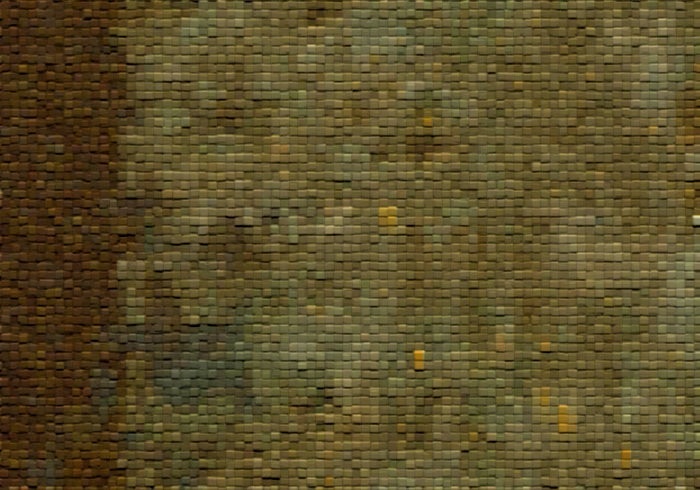Today began in a fairly leisurely way, as we were not intending to leave the hotel until 10 am. The extra time gave me the opportunity to do a complete re-pack of my bag, the first since leaving Hong Kong on 23rd June, and definitely needed following the thorough customs check on entering Turkmenistan and the subsequent purchase of the President's sacred books.
After checking out at 10 am, we went to the markets to stock up on water for the next few days in the mountains near the Turkmenistan-Iran border, and then headed off to the north-west of Ashgabat. Our first stop was in Kipchak, the village on the outskirts of Ashgabat where President Niyazov was born. On the edge of town we visited the huge, golden-domed mosque which was finished two years ago, and which is now the largest mosque in Central Asia.
It was an amazing sight to see this huge mosque, surrounded by lawns and gushing fountains, featuring the world's highest minarets (92 metres, in recognition of Turkmenistan's independence at the start of 1992), inscribed with quotes from the President's sacred book, 'Rukhnama', rather than the Koran as is usual on mosques. We were given an opportunity to see inside, but without taking photos of course. It was extremely ornate but also extremely tasteful, once again featuring quotes from 'Rukhnama' around the walls and an absolutely amazing interior dome overhead.
Right beside the mosque, which is named 'The Mosque of Turkmenbashi's Soul', is a new family mausoleum where the President's parents and older brothers are buried. Like Napoleon's tomb in Paris, the graves are on display in an open basement below ground level so one must look at them from a circular balcony with head bowed respectfully. In the middle of the mausoleum is a large flat raised plinth where at the moment stands a sculpture with an open book, the Koran.
Following this visit, we drove further west to Geok-Depe, the place where the Turkmens made their unsuccessful last stand against the invading Russians during tsarist times. The surrounding fortress wall still stands, but in the middle of the compound now stands the Saparmyrat Mosque, built in the mid-1990s in honour of the President's haj to Mecca. Niyazov had been an ardent atheist during Communist times, but is said to have now adopted pragmatism, which is expressed outwardly as Islam. As many Turkmens cannot afford to undertake a haj to Mecca, this mosque has been designated as an alternative point of pilgrimage, and Turkmens are encouraged to worship here once a year. We were fortunate to be present on a Friday, which is Muslim holy day, and we saw a couple of hundred men leaving and exchanging greetings with each other in a rotating line before venturing inside.
More driving across the flat plain took us along the route of the ancient Silk Road, following a narrow well-watered corridor with the mountains on our left and the desert on our right. We eventually arrived at Köw-Ata Underground Lake, which sounded like some exciting geography to be observed! As our guidebook had indicated an entrance fee of $2 per person, I was a bit surprised to be asked for 100,000 manat each for Andy and myself, a total of 200,000 manat – which really blew my budget for the next few days. However, expecting something really special, I paid and we descended the steps 65 metres down into the base of a rocky mountain. What we found at the bottom was a dimly lit, hot, sulphurous pool with a few local people swimming in it, a long way short of the spectacular Guilin-like experience I was half-hoping for. We stayed for a few hot uncomfortable minutes and then returned to the comparatively refreshing air outside, feeling pretty ripped off.
After a very late lunch of chicken kebabs and coke, we left Köw-Ata at about 4:30 pm and continued our drive up into the mountains that form the border between Turkmenistan and Iran. This was by far the most spectacular scenery of the day, with barren, rugged, rocky mountains surrounding our winding road. We passed through the village of Nokhur, which was to have been our destination until a recent change in government regulations banned foreigners staying in people's private houses. We therefore continued our journey about 11 kilometres further up into the mountains to a beautiful semi-alpine valley called Chandybil.
Our accommodation was in a fairly basic hut, situated in superb surroundings. In fact, it was so pretty that Andy and I decided to go for a later afternoon walk. Chandybil was a very remote area of traditional farming with cattle, goats and donkeys, all of which looked fantastic in the golden mountain sunlight of the late afternoon. The only hiccup was that we were accompanied by a beautiful gentle dog which was attacked by a band of other dogs at one point in our walk. The dog which had been accompanying us seemed so terrified that it stayed right beside Andy and me – in fact, between us – for the rest of our walk.
We finished the day sitting on a platform under a tree with Oleg and David, drinking green tea and watching the night descend on the valley in the cool evening air of 1450 metres altitude.














